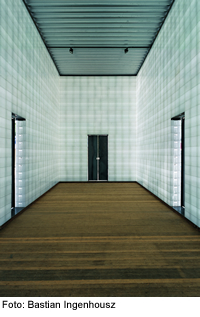Museum Pavilion in Rotterdam

Constructed in the summer of 2001 as the outcome of a competition, the pavilion is used by the initiators of “De Parade” theatre festival as a travelling art museum. An attempt was made to create an “architecture of walls”. A special series of standard Dutch beer crates was manufactured from colourless, translucent plastic in a bid to meet the seemingly impossible task of building a structure to the given budget. The crates are strong yet light and have side lengths in the proportions 4:2:3, which allow them to be used in a modular system. With a construction price of 55/m3, itwas possible to erect a structure with an internal space 15 ? 4 ? 6 m in size. Depending on the weather and the position of the sun, thetranslucent walls result in changes of coloration and different degrees of brightness internally, affording ideal conditions for the exhibition of works of art. No additional lighting isnecessary during the day. The preassembled wall elements consist of 3 ? 6 crates, which arejoined together by threaded rods. The 30cm load-bearing walls are stabilized at the top and bottom by peripheral tie beams, whichare also connected and braced by threaded rods. The roof diaphragm has a further stabilizing effect. The tie beam at the base is fixed in the ground by so-called “circus anchors”. Six people can assemble or dismantle the building within a single day, and thecrates can ultimately be recycled.
